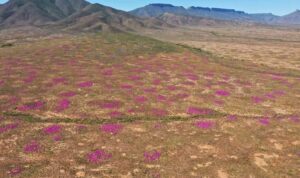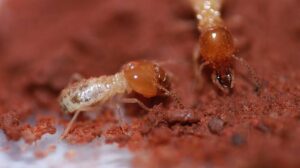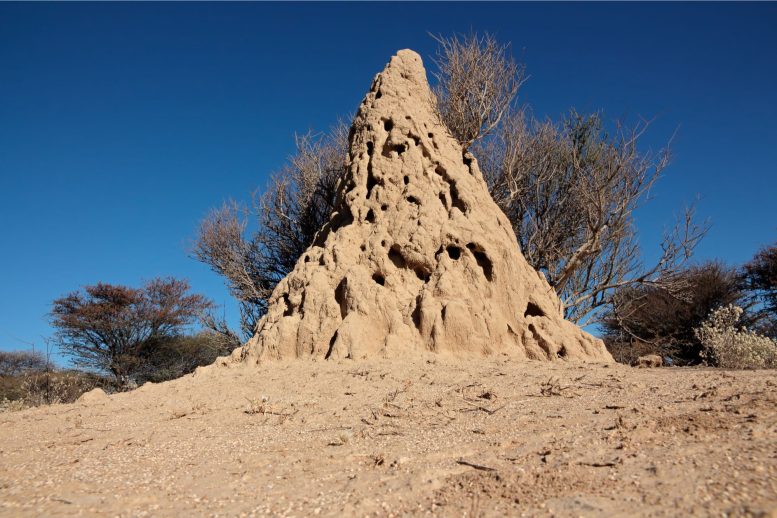How 34,000-year-old termite mounds unearthed rewrite climate history
In an astonishing breakthrough, scientists have unearthed the world’s oldest inhabited termite mounds along the Buffels River in Namaqualand, South Africa. These extraordinary mounds, dating back a mind-boggling 34,000 years, are revolutionising our understanding of prehistoric life, ancient climates, and natural carbon storage.
The Remarkable “Heuweltjies”
Locally known as “heuweltjies,” meaning “little hills” in Afrikaans, these termite mounds are the creation of the southern harvester termite (Microhodotermes viator). Dr. Michele Francis, a Senior Lecturer at Stellenbosch University, leads the team that discovered these mounds. Radiocarbon dating revealed ages ranging from 13,000 to 34,000 years, surpassing the age of Europe’s iconic cave paintings and predating the Last Glacial Maximum.
A Glimpse into Prehistoric Climates
These ancient mounds are more than just historical artifacts; they are invaluable records of prehistoric climate conditions. During their formation, Namaqualand experienced significantly more rainfall than today. This wetter climate facilitated the dissolution and downward movement of minerals like calcite and gypsum into the groundwater, crucial for understanding natural carbon sequestration processes. The region still experiences sporadic intense rainfall, reactivating these ancient processes.
READ ALSO: Explore Timeless Treasures: 13 oldest countries you will love to visit
Nature’s Ingenious Carbon Custodians
The termite mounds reveal two groundbreaking mechanisms for carbon sequestration. Firstly, termites’ harvesting activities inject fresh organic material deep into their nests, continually renewing vital soil carbon reservoirs where they are preserved longer. Secondly, the calcareous mounds provide long-term CO₂ storage through the dissolution of soil mineral calcite, mirroring the goals of modern carbon storage initiatives.


Global Significance and Future Research
Dr. Francis highlights the global importance of these findings, calling for the recognition of these mounds as natural wonders. Their age and insights into ancient ecosystems could reshape our strategies for combating climate change by harnessing nature’s own carbon sequestration processes. The heuweltjies are now the focus of further research by a PhD student from Stellenbosch University, supported by a collaborative grant from the National Science Foundation and the National Research Foundation of South Africa.

A Call to Preserve Nature’s Marvels
“The discovery of these mounds is akin to deciphering an ancient manuscript that transforms our understanding of history,” says Dr. Francis. “These tiny engineers have been shaping our environment for tens of thousands of years, and their mounds stand as a testament to the delicate interplay between climate, environment, and life on Earth.”
The unearthing of the world’s oldest termite mounds in Namaqualand not only sheds light on the distant past but also offers critical clues for our future. As scientists delve deeper into the secrets of these ancient structures, they underscore the importance of preserving our natural world and leveraging its processes to combat climate change.
These mounds are a remarkable reminder of the incredible history hidden beneath our feet and the enduring impact of nature’s smallest architects.
Follow the Neptune Prime channel on WhatsApp:
Do you have breaking news, interview request, opinion, suggestion, or want your event covered? Email us at neptuneprime2233@gmail.com





